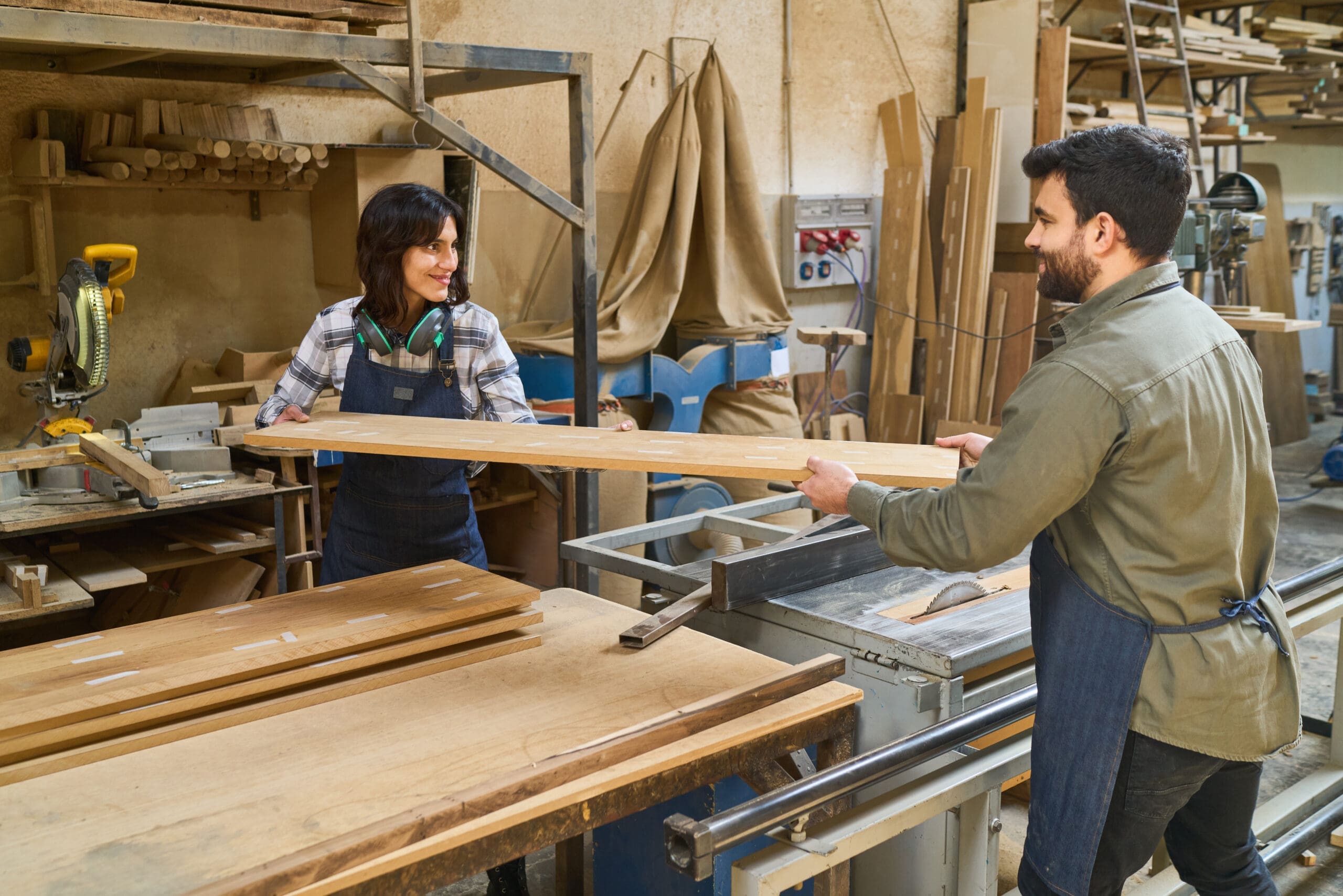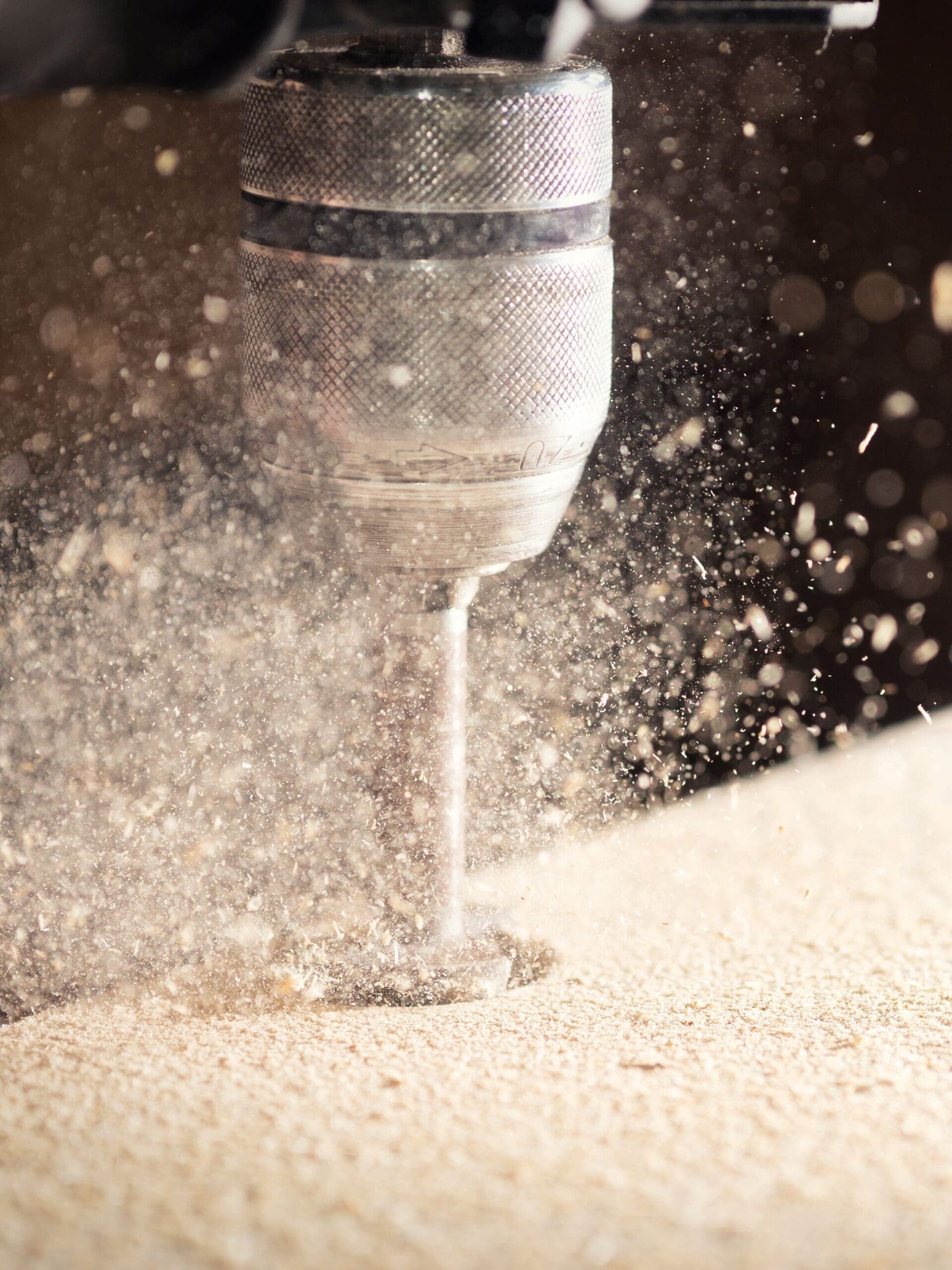
In any woodshop, whether a solo craftsman’s smaller business or a full-scale industrial operation, sawdust is a constant byproduct. But without a proper woodshop dust collection system, that dust can turn from a nuisance into a serious hazard. It compromises air quality, clogs equipment, and, under the right conditions, becomes highly combustible. Protecting your health, your shop, and your investment starts with a reliable dust collection system for wood shop environments.
The importance of dust collection systems cannot be overstated. A well-configured setup can significantly enhance safety, efficiency, and overall peace of mind in your workspace.
Whether you’re retrofitting a hobbyist’s workshop or building a system for a commercial production line, the correct setup starts with expert planning. Our design and installation process begins with a complete evaluation of your workspace and equipment.
We assess:
Our team then develops a customized layout to optimize suction, airflow, and maintenance access while minimizing energy use and noise.
Installation is handled with precision—from routing ductwork and positioning blast gates to testing airflow and ensuring airtight seals. We also provide post-installation support to ensure everything runs smoothly long-term.

Breathing in fine wood dust is unpleasant and dangerous. Prolonged exposure to airborne particulates can lead to respiratory issues, skin irritation, and even long-term conditions like asthma or cancer. Moreover, wood dust is highly flammable. According to the NFPA 660, the unified standard for all combustible dusts, including wood, proper collection and ventilation are not just good practices. They’re safety mandates you must follow.
A comprehensive sawdust collection system removes airborne hazards at the source, helping to:
What do the standards say about dust collection?
The safest and most reliable way to keep proper airflow in a dust collection system is to design it with the right balance from the start. This “balanced-by-design” approach means the system is engineered so that airflow is correct without needing to adjust gates or dampers.
According to NFPA standards, gates or dampers can be used on individual machines, but only if they do not slow the system’s airflow below the safe minimum. If they are needed to fine-tune a system after changes, they must be permanently fixed in place and not adjusted during operation. Opening and closing gates while the system is running to shift suction between machines can upset the airflow balance, and does not adhere to the standards now in place. Why don’t opening and closing gates meet the established standards? When airflow balance is disrupted, dust can accumulate in the main duct, increasing the risk of a fire.
Every shop is different, and your dust collection system for wood shop use needs to reflect that. We offer scalable solutions for:
From MDF dust to hardwood shavings and everything in between, we design systems that handle it all.

A dust collection system is a coordinated set of parts that work together. Understanding these components helps you plan for efficiency and flexibility.
Key components include:
There are also different system types, including single-stage, dual-stage (cyclone), and central collection systems designed for larger woodshops.

We proudly offer design, installation, and maintenance services throughout:
If you’re outside this region, please contact us to arrange a custom consultation.
Choosing the right partner makes all the difference. Our expertise lies in translating complex safety standards and engineering principles into real-world solutions for your shop. We don’t just install systems. We deliver cleaner, safer, more productive environments.
When you work with Environmental Air Technology, you get:
Your shop deserves more than just dust removal. It deserves engineered air quality that supports your craft and protects your team.
Choosing the right woodshop dust collection system can be overwhelming, especially with numerous options and safety standards to consider. To help you make informed decisions and get the most out of your setup, we’ve answered some of the most common questions we hear from woodworkers whether you’re building a new shop, upgrading your current system, or just starting to explore your options. These insights encompass a wide range of topics, including system sizing, safety compliance, maintenance, and more.
Dust collection is vital for health, safety, and machine longevity. It keeps airborne particles from damaging lungs, prevents fires, and reduces tool wear.
A dust collector captures debris at the source (e.g., saws and sanders). An air purifier filters general air but doesn’t manage heavy particulates like wood dust.
It depends on your equipment, the length of your ductwork, and the number of machines operating simultaneously. We calculate your needed CFM (cubic feet per minute) to size your system accurately.
We install single-stage, cyclone, and central systems, each suited to different shop sizes and configurations.
Yes, you can install a system in existing woodshops. We specialize in retrofitting existing shops as well as outfitting new construction.
We factor in particle size and volume for each type of wood and select filters and airflow accordingly.
Pricing varies by shop size and complexity. Contact us for a custom quote based on your unique needs.
Absolutely. We provide maintenance plans, filter replacements, inspections, and system upgrades.
Our systems follow NFPA 660, OSHA regulations, and local fire codes to ensure safe operation.
Regular filter checks, duct cleaning, and performance assessments help keep your system running efficiently and safely.